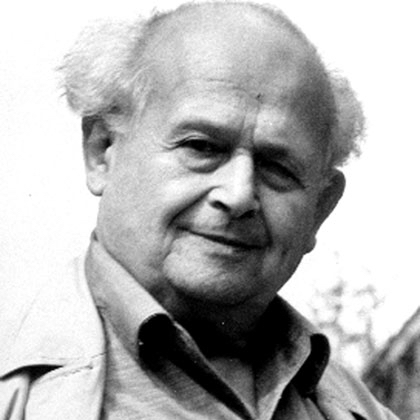What is the normal process of learning?
Excerpts are from an interview with Dr. Moshe Feldenkrais, the founder of the Feldenkrais Method®.
According to Dr. Feldenkrais, typically developing children learn movement through “fifty”, “a hundred trials” and “with every new attempt” the child finds movement “which is simpler, easier” until he develops “a modicum of movement which then feels really comfortable.”
A child with cerebral palsy is handicapped “because he cannot reproduce the same movement twice. He’s spastic and cannot use his legs or arms at will, therefore his attempts are never really producing something, which by any stretch of imagination, you could get to a position where you could choose from the different attempts a better one, because they never resemble themselves sufficiently.”
“My intervention is that, I produce a reproducible movement which the child themselves can’t do. So I hold them and make a movement which he can do for 10, 15 times exactly the same and therefore he has the possibility of learning… because he has something which is more or less identical and in that he can find a slight improvement from one to the other. Therefore his brain actually catches up to become more or less normal and use the normal procedure of learning.”
Around 6 minutes into the video, you can see Dr. Feldenkrais working with Jonathan Huges, age 4 and a half with cerebral palsy.
Jonathan couldn’t sit up straight. He crouched forward, had very weak muscles in the back and no control of his feet.
Moshe noted, “This child never stood on his feet and therefore his brain has never made the pattern of action and reaction to standing on the feet…”
“Therefore, I put an ‘artificial floor’ on his feet and try to produce the irritation that would happen if he stood on his feet and was walking on an inclined plane, on any other sort of changing ground so as to form some sort of connection in the brain as if he were actually experiencing normal child’s walking.”
Moshe explained further that “these irritations have actually altered the organization of the motor cortex” of Jonathan’s brain as evident from his positive responses.
After Moshe helped Jonathan to form the pattern of rolling to the side and using his legs like two normal legs, the interviewer remarked (at 11:25), “Moshe, that was extraordinary.”
To which Dr. Feldenkrais replied, “Well, it is extraordinary but quite ordinary because it happens with every case like that.”
“…I am substituting myself for an environment to make the child who has cerebral palsy, and has therefore spasticity and ‘unformed’ joints, who cannot reproduce the movement closely identical to one another so that he can have some learning ability. Sometimes he puts his hand to the right and he goes to the left…”
“Now I produce invariant movements, make them as closely resemble one another as what happens with a normal child, and therefore in 50 or 100 repetitions, that child finds out the means of learning the way other normal children, who have no brain damage and no trouble, do actually learn. And so he learns too!”
At this part of the video, Dr. Feldenkrais taught Jonathan how to crawl and he was screaming with joy!
The interviewer exclaimed (at 16:10), “Moshe, I cannot believe what I just saw on the screen… It was like a miracle.”
Moshe replied, “Well, it is in a sense a miracle but it has nothing to do with miracles.”
“The whole thing is improvised. Yes, it is as precise as a scientific experiment and it’s repetitive. It can be done 99 times of a 100 with the same result.”
“The important thing is to see that we act on a child like that as a human being, both in his emotional state and his relation to his mother. You give an importance to himself, not talking to his mother but to him, approaching him. And in the end you can see the child feels such an immense change in confidence in himself.”
“And in one hour, he becomes so friendly that he stretches out to a stranger, to embrace him and caress him, and actually kiss him, in a way, as you’ve seen yourself.”
“You can see the tremendous internal satisfaction, and really incredible in that sense, it’s miraculous to see how clever the human nervous system is and how clever even a damaged brain can learn!”
I hope you’ve enjoyed Dr. Feldenkrais’ wisdom as much as I do. And if you would like to hear from the master himself, here’s the interview for you.
QUESTIONS FOR YOU TO PONDER:
- How can I support my child with their normal process of learning through repetition of similar movements?
- How often do I make my child feel important?
- How can I create learning environments for my child at home?



